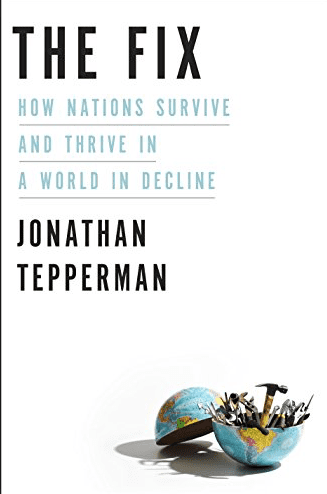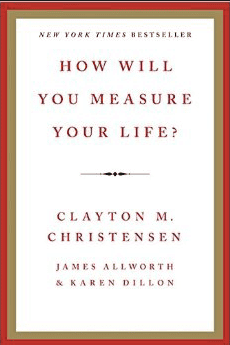|
Everyone is making 2017 healthcare predictions for the new year; from individuals and their diet and exercise plans, hospitals and payers focusing on their relationships and the financial industry speculating which healthcare stocks will outperform which other healthcare stocks. Below, I've pulled from the best lists ranging from marketing, finance, and consulting. There is plenty of speculation to go around in this $3 trillion-dollar industry. What are your predictions? Agree or Disagree with these lists?
Bullet points pulled from the website articles, click on the links to read more. 1. Forbes: 9 Healthcare Predictions for 2017
2. Beckers: 5 Healthcare Predictions for 2017 - Behavioral analytics, patient personas & more
3. Bernard Health Blog: Healthcare Predictions for 2017
4. Health IT Outcomes: 4 Healthcare Industry Predictions for 2017
**5. Fortune: Why Drug Costs will keep Rising in 2017
6. PWC: Medical Cost Trend: Behind the Numbers 2017
7. PM360: 10 Predictions for How the Healthcare Industry will Change in 2017
8. Philips: Top 5 HealthTech Predictions for 2017
9. Fidelity: 2017 Outlook: Healthcare
10. Tsahia's 3:
0 Comments
I'll tell you a secret that only my very best friends know, I love reality TV! Well not all reality TV but the stories about the American experience that deliver insight into closed societies like Escaping Polygamy and Leah Rimini: Scientology and the Aftermath. Aside from those shows, I love travel shows and almost anything on HGTV. When I was younger, I loved MTV's The Real World and Cops. I can still here that infamous tune, bad boys, bad boys, what you gonna do, what you gonna do when they come for you...
However, there is one show that makes me cringe, but I watch it ...sort of like how I watch Alien or Prometheus... it's the documentary series, Beyond Scared Straight on A&E. The show details an intense day long journey of troubled young people whose parents have sent them jail. The visit includes inmates and corrections officers screaming at them until they realize jail is not the place to be. Parents visit their children in jail and talk to them through phones separated by glass barriers. At the end of the day, it is up to a judge (and the consent slip) to determine if they go home or have to spend the night. Usually, the adolescents are crying and have been through enough trauma, realizing their mistakes (if only temporarily) and are apologizing profusely to their parents, professing all of their wrongs and how they will be made right. Why do I watch this show when the only thing scarier to me than American jail is foreign jail? To think these young people would have behavior that leads them to this place is a wonder to me. In the US, there are nearly 2.3 million people in prison, and over 200k are women. As a person, passionate about public health, for me, this show sheds light into the missing stories of what happens in prison and what leads some young people on the path to incarceration. Whether or not the method of the program - one which conveys bullying from the officers and inmates, threats of beat downs and rape juxtaposed to gentler counseling sessions, to "get through" to rowdy young people is correct; it certainly shows that BOTH a shock experience coupled with mentoring from the officers can turn lives around. The officers and inmates do not coddle or mince words, the experience is a real American jail - single cell, overcrowded, locked down, terrible food, aggressive inmates, lots of handcuffs, and tough corrections officers. Is this the right way to rehab young people gone rogue - stealing, disrespecting their parents, fighting, drinking, drug use, etc.? I don't know. One might argue that this treatment is warranted by the terror created for families dealing with these situations. Often, the family who brings the children to the jail program are mothers, usually in a single parent household. When the viewer gets a glimpse into the homes, we see families broken apart by having other relatives in jail, poverty, lack of resources and other surrounding influences such as gang violence and drug dealing. The show crosses racial and gender barriers, but one thing seems common for most of the families: poverty. One might argue that this show targets low income families in an attempt to exploit them, but no parent wants to see their child in prison, and this program is often a last resort. Can we or should we deal with bad behavior by a visit to prison? Will this combat the long-term issues related to poverty, crime in the surrounding area, trauma, depression, and the social determinants of health? How can we do better? In the US, the David Lynch Foundation offers meditation programs in schools to reduce stress and violence, as we know many children live in these environments of poverty, fear, and trauma. The mediation program is having a profoundly positive effect on children and school environments. Children should also have regular visits to a general practitioner (GP). A GP can identify issues of concern and refer out to psychologists and other mental health professional to provide counseling services - but, if children and parents do not have access to a GP, it's less likely that they will have access to mental health counselling. In addition, communities and law enforcement can offer second chances to offenders by creating a "continuum of care" by referring juvenile offenders to various treatment programs, but with the ability to stay connected to their family and community. Unfortunately, second chances don't often come around like they do on Pitbulls & Parolees, another show I love, that features the Villalobos Rescue Center, where both pitbulls and parolees can have a second chance. Outside of the US, Norway's, recidivism rate is 20% compared to approximately 75% in the United States. Why? In countries, such as Norway and Rwanda, societies believe reconciliation, education and rehabilitation are superior to a revolving door of incarceration. Even after the Rwandan genocide in 1994 where some 800,000 people were slaughtered, the government realized that it did not have the capacity to incarcerate every criminal, so it began an unheard-of process of reconciliation using gacaca courts, which has ultimately led it to economic prosperity and relatively low crime rates, especially violent crime. In all countries, the path to incarceration can always be reduced. It will be interesting to see where the US falls over the next 5 to 10 years. 2017 will present a number of challenges in healthcare, we may deal with a repeal of the Affordable Care Act (ACA), layoffs due to a downturn in the economy, or grapple with the public health crises of an opioid epidemic or gun violence. With a new presidential administration, our abilities to quickly adapt to change professionally and personally will determine a number of healthcare outcomes. We will have to continue to put the patient experience first, work towards an integrated healthcare system, and a robust interoperable IT infrastructure (and much more). The healthcare transformation will continue; and because this profession can be a very personal one, whether administrative or clinical, we have to remember to put the patient first and work together through these new challenges. So, when it comes to professional and personal growth, I am obsessed with two things: organizational culture transformation and defining your own mission, vision and values. Transformation can happen in a number of ways but I am drawn to these two concepts because I love inspiring stories of people overcoming seemingly impossible obstacles. Plus, working at an AMC (academic medical center) connected to a general and children's hospital, I am reminded that babies are surviving open heart surgeries, HIV is no longer a death sentence, children are surviving the most aggressive cancers, and 3D printing is changing the price point and possibilities from 3D printed skin to bionic ears (I could go on for a long time). This so inspiring and hopeful. Because I am inspired and continually working to enhance my knowledge of the world (and I have a really long commute in NYC) I turn to books to explore stories from around the world and find ways in which I can approach problems differently. The 3 books below have significantly contributed to my understanding and approach to looking at healthcare, policy and personal growth. Enjoy! As an update to this post, I've included 2016 book lists from a few of my favorite websites. These lists are very diverse. The books cover a range of topics: refugee crises, strategy, race, culture, entertainment, American policy, the new administration, etc. Zadie Smith's, "Swing Time" and Colson Whitehead's, "The Underground Railroad" both made a couple lists. The Washington Post's list contains several categories from thriller, poetry, children's and science fiction. Goldman Sachs: 2016 Back-To-School Reading List Los Angeles Times: 10 Most Important Books of 2016 The Washington Post: The 10 Best Books of 2016 The New Yorker: The Books We Loved In 2016 The Fix: How Nations Survive and Thrive in a World in Decline, Jonathan Tepperman This book is one of my favorites. I stumbled upon this book on the first floor of my local Barnes & Noble in Brooklyn, NY. Given my feelings about the uncertainty in 2017, I was drawn to the title because the book discusses how several nations and their leaders were able to truly innovate, drive ideas and thrive when all odds were against them. The Rwandan peace process, Singapore's transformation to a nearly corruption free nation, Bolsa Familia, a cash welfare program in Brazil and the shale revolution in the US are just some of the chapters in this amazing book. Chapter 9, Give to Get, describes how the political parties and president of Mexico worked together for the greater good of the country. Mexico was able to pass the Pacto por Mexico: a collaborative and progressive 95 item reform agenda that aimed to tackle the country's most political, social and economic problems. Given the impossible gridlock we've seen in the US political system, this type of legislation seems unimaginable, but the Mexican government acted together in the interest of its citizens and the profound impact of this agenda will be realized for years to come. Transforming Health Care, Virginia Mason Medical Center's Pursuit of the Perfect Patience Experience, Charles Kenney I was introduced to this book as part of my Columbia grad school curriculum on hospital management. I loved the real deal narrative of what it takes to transform a hospital's culture and the patient experience, that starting from the inside and not depending on outside entities can leverage the biggest impact. It is also an account of cross-cultural and cross-industry learning. US healthcare system from Seattle, Washington meets a Japanese Toyota production facility in Toyota City, Japan. This is essential reading for all healthcare managers and even those in other industries trying to transform their own industries. How Will You Measure Your Life, Clayton M. Christensen, James, Allworth, and Karen Dillon
A good friend who knows me well recommended this book, so I could further contemplate my purpose, mission & vision (he knows I love this stuff). For me, the main takeaway from this book: understand your job in relationships. In many industries we focus too much on what we want to sell to our customers but not what they actually need - what job is our product or service fulfilling? I especially enjoyed the last chapter called, Staying Out of Jail. The moral dilemmas we may find ourselves in during life may be small and less apparent or very obvious and blatant. In our life, what do we need to do to live with integrity? Interestingly, this book is connected to HBR's On Managing Yourself. I have a copy of this book as well. If you purchase the HBR book on the iTunes store, you'll get a copy of the bonus article How Will You Measure Your Life? also by Christensen.  Copenhagen food market Copenhagen food market This saying, "be comfortable with being uncomfortable," has to be one of my all-time favorite quotes right up there with Maya Angelou's famous words, "I've learned that people will forget what you said, people will forget what you did, but people will never forget how you made them feel." These are such powerful words. I love these quotes as guidance to live by, and I love to recite them to others when an appropriate moment presents itself. Experts across the spectrum from the military, psychology, education, mentors, etc. will likely agree that you must live in an uncomfortable space and be OK with it from time to time. Recently, I was at dinner with a very good friend, who also happens to be a wonderfully talented life coach and meditation expert, who inspired this post. I always love our conversations and I was explaining a personal dilemma and that I don't like to live in gray spaces. After she let me talk for a bit, she cut me off and told me, "you need to learn how to live in it for a little." I was so shocked, and even as I write this, part of me doesn't want to accept the reality that sometimes I do have to live in gray spaces and not everything is black and white. There are some parts of life that we are able to control such as career direction and strategy, our willingness to work hard, and how we let others influence our lives. But sometimes we have to wait for decisions that affect us, such as waiting for a medical diagnosis, layoff notices or company restructuring, or whether we get a certain award for our achievements. For some this can be exciting, for others this can be a nerve-wrecking time. However, there are some aspects where we can maintain some degree of control by taking appropriate action or by waiting patiently for some set amount of time. I can distinctly remember learning how to swim from the deep end to the shallow end (only 2 years ago). I was so nervous and anxious but I would see others who were even more fearful and channel my energy calmly to calm both of us down. With enough practice, I was well on my way to swimming from end to end without fear or reservation. But this only happened because I did the steps below. These are my techniques for living in gray space when you're a person who loves to control:
Throughout these gray moments, allow others to support and encourage you. There is no need to suffer through it without the right kind of help. In my personal and professional experience, I've found people who were willing to help me when I needed support and mentoring. For that, I am grateful and return the favor to others who can benefit. Unions are often in the news, especially during election cycles. The unions in Wisconsin have been a controversial topic because of the dramatic reduction in pay and benefits for some union members, especially the teachers' union. Some news sources have reported that the incoming presidential administration will be less tolerant and accepting of unions. In my own profession, I have heard colleagues talk about how much they dislike unions and horror tales of bad behavior because of overly protective unions.
When I first started in administration, I did not have a clear grasp on how unions and administration worked together. It was a sobering process. Prior, I was a union member for nearly 8 years, but my history in the union was always a positive. I received great tuition benefits that helped me earn an BA in Economics, yearly cost of living increases, and low out-of-pocket comprehensive medical expenses. Most of my friends in the union used the child care benefits, attended the union holiday party and meetings. I hope to dispel two myths: union and administration have a difficult time working together and unions are bad for healthcare. Myth 1: Unions and administration have a difficult time working together. In my experience, as a union member and as administration, I've been on both sides of the issue. In academic medical centers, the union members are generally clerical and technical employees; whereas in hospitals, generally the nurses, clerical and some technical staff are unionized. My experience is primarily with union members in an academic medical center. There is truth to these myths, however, much can be mitigated if both groups have a clear sense of mission and purpose. Most times conflict can happen between the two groups for these reasons:
Myth 2: Unions are bad for healthcare. I believe unions are in place to protect some of our most valued staff members and to ensure good working conditions. The benefits the union offered to me (as I mentioned) were invaluable. If a company has good management practices, there should be few issues between union members and administration. Certainly, there will be disagreements, as we've seen in the form of worker strikes and dismantling of unions. However, many union members are doing incredibly valuable and essential work in non-profit sectors for much lower compensation than they would receive in the for-profit sector. They are also doing jobs that keep the foundation of the organization running and allow management time to focus on the strategic and financial priorities. There will always be conflict but circling back to the mission, vision and values should get working relationships back on a positive track.  As a hiring manager, interview coach, and mentor, I have had experience working with individuals both professionally and through volunteer work with the MSPH (Mailman School of Public Health) alumni network. Even if a candidate has nerves or isn't quite polished during the interview, the person may have all of the qualifications necessary (and more) for the position. What can either make or break the candidate are their references. Some people don't realize how important great references can be in the selection process. Make sure hiring managers have the name, email and phone number for references. Also, be sure to note the relationship between you and your references. Two to 3 references should be sufficient for most positions. Here are my top 3 keys for references:
To sum things up, do not make the hiring manager work for it. The conversation should be thorough, honest and easy. If you take these 3 steps in working with your references, you'll have a great chance in getting the job! |
Tsahia (like Tsunami - yes, the T is silent - Sa-hee-ah) is a healthcare enthusiast working to transform patient care for all of us while driving creative and innovative solutions with technology. Archives
March 2021
Categories |











 RSS Feed
RSS Feed